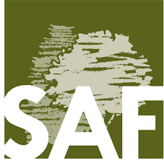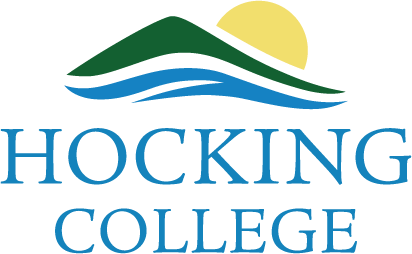Forest Management Program Description
The Forest Management Program provides a solid academic background through extensive field training. Classroom work is complemented by field experience in the safe use of tools and equipment, as well as conducting forest inventories, planting trees, wildland firefighting, and trips to area forestry institutions and businesses.
As a forest technician, your responsibilities will include collection and interpretation of forest data, documentation of environmental conditions, prescribing and implementing forest management practices, checking contract compliance, and supervision of field crews.
Hocking College offers all-inclusive pricing and works with students to assure they have complete college funding, including financial aid, before they start classes. Please reference the course curriculum tab for program costs.
All-inclusive pricing includes the following:
PER SEMESTER
$300......Learning Fee
$20........Health Center Services
$75........Career Center Services
Not included in the All-Inclusive Pricing
$53......Parking
Pricing for housing and meal plans can be found here.
A Career in Forest Management Offers Many Opportunities
Graduates of the Forest Management program are eligible for employment with public and private forestry organizations and operate forestry equipment ranging from a hand compass to the surveyor’s transit to chainsaws and bulldozers.
Hocking College makes sure that students are prepared for careers in applied forestry positions as nursery operators, timber cruisers, restoration and reforestation specialists, fire prevention and suppression workers, insect or disease control technicians, silviculture workers, and log scalers, and to provide sufficient background for growth and advancement in the forestry profession.
Check out potential job opportunities all across the country for forestry management majors on the SAF (Society of American Foresters) website here, or here.
Student Learning Outcomes (SLOs) are statements of what a student will be able to do when they have completed a program. They represent the knowledge and skills a program has determined are most important for students to gain from that program and include both the Success Skills (institutional outcomes) and Program Outcomes. SLOs are specific and measurable so the program can accurately assess the degree to which students have achieved each outcome, and they align with college and institution mission and values. Data on the achievement of SLOs is used to make improvements in the program and increase student success.
Hocking College Institutional Learning Outcomes
1) Demonstrate sound critical thinking, information literacy and technological competency in the production of academic writing and presentations
2) Apply the methods of mathematical, statistical or analytical reasoning to critically evaluate data, solve problems and effectively communicate findings.
3) Demonstrate an awareness of the social, political and economic forces which shape individuals, institutions and communities in the modern world.
4)Understand social justice and the diversities and complexities of the cultural and social world past and present and come to an informed sense of self and others.
5)Demonstrate a foundation of knowledge in the natural sciences based on theory and laboratory skills.
6) Cultivate ethical values, personal wellness and personal learning strategies in the development of the whole person, mind, body and spirit.
7) Integrate content material to application in the workforce and apply discipline specific knowledge and skills to successfully transfer or effectively meet the expectations of internships, workplace, volunteerism and/or entrepreneurship endeavors.
8) Utilize the ethical and professional application of current information technology and tools effectively.
Program Outcomes
The following outcomes are skills, behaviors, and attitudes cultivated in students seeking the Associate of Applied Science in Forest Management:
- Identifies species of trees using individual characteristics, dichotomous keys and site information
- Applies knowledge of forest ecology, including plant succession, soils, environmental protection, weather/climate influences, and relations of trees to other organisms
- Practices sound silviculture and reforestation techniques
- Protects and enhances wooded environments with fire control and use
- Uses knowledge of the impact of, and methods for controlling insects, diseases and animals
- Correctly uses equipment and techniques to perform forest and tree measurements to complete a forest inventory
- Correctly performs land surveys, aerial photo interpretation, and map interpretation
- Uses effective harvesting techniques, including safe and environmentally sound operation of equipment
- Collects and analyzes data toward the development and implementation of a project
- Implements sound forest management plans with an understanding of multiple use principles and awareness of forest products utilization
- Demonstrates proactive supervision and inspection skills for compliance and enforcement of forest management practices /projects
- Practices business management and marketing techniques to set targets/goals for cost-effective forest management
Retention Rates
Retention rates are determined by the office of Institutional Research utilizing the following criteria:
- All registered fall/autumn students with registration status for the following fall/autumn.
- Excludes special populations - College Credit Plus, Non Degree, Online Military and University Center.
Potential for upcoming fall/autumn excludes graduates from that fall/autumn, spring and summer terms.
| Academic Year | Retention Rate |
| 2014 | 65% |
| 2015 | 64% |
| 2016 | 59% |
| 2017 | 75% |
| 2018 | 50% |
Graduation Rates
Graduation rates are determined by the office of Institutional Research. To ensure appropriate time for data collection, this report will be run and posted annually in the last week of September for the previous academic year. It should be noted that annual graduation rates may change as students continue to graduate. The following criteria will be utilized for the calculation of graduation rates:
- Overall Program Completion Rate is defined as a percentage of the ratio:
All graduates of the program
_________________________________________________________________
All students with the program in their history of programs of study - For the purposes of reporting, the program completion rates are aggregated by academic year of entry.
- A student is considered to have completed or graduated from a program or certificate by virtue of having been awarded the degree or certificate.
- A student is considered to be undertaking activity in a program of study for the duration of time that they are in an active status in a program or certificate. This is defined by having a Program of Study with a status of ‘A’ during the duration of time they are taking coursework. Should a student move in and out of active status in a program of study while continuing to take coursework, we only take into account the student’s activity while the program has an active status for that particular program of study.
| Academic Year | Graduation Rate |
| 2014 | 47% |
| 2015 | 43% |
| 2016 | 53% |
| 2017 | 36% |
Are there jobs out there for me once I graduate?
Yes! There are a number of great jobs out there in a wide variety of areas. Most of our graduates enter one of the following career paths: governmental forestry, industrial forestry, consulting forestry, urban forestry or wildland firefighting.
Where can I work with this type of degree?
Our graduates work all over the nation. Essentially, anywhere where there are trees there is the potential for forestry-based positions. However, most of our students work either in Ohio or a surrounding state.
If I want to earn a Bachelor's degree, what options do I have?
We currently have a 2+2 articulation set up with West Virginia University for students wanting to earn a Bachelor’s degree in forest management.
While at the present, we do not have a formal articulation set up with The Ohio State University, a number of our graduates continue on in their forestry education there, where they are quite successful.
Additional transfer resources can be found here.
What are the typical job duties of someone in this industry?
As a forest technician, your responsibilities will include collection and interpretation of forest data, documentation of environmental conditions, prescribing and implementing forest management practices, checking contract compliance, and supervision of field crews.
How much time is spent inside versus outside in Forest Management courses?
All Forest Management courses will vary somewhat, however, more than half of the class time is typically spent outdoors.
Some of our NR faculty believes that the best classroom for a student in this program is not located in a building, but rather in the woods which surround our campus buildings.
Accreditation Affiliate
 Society of American Foresters (SAF)
Society of American Foresters (SAF)
10100 Laureate Way
Bethesda, MD 20814
Phone: (301) 897-8720 | Fax: (301) 897-3690







